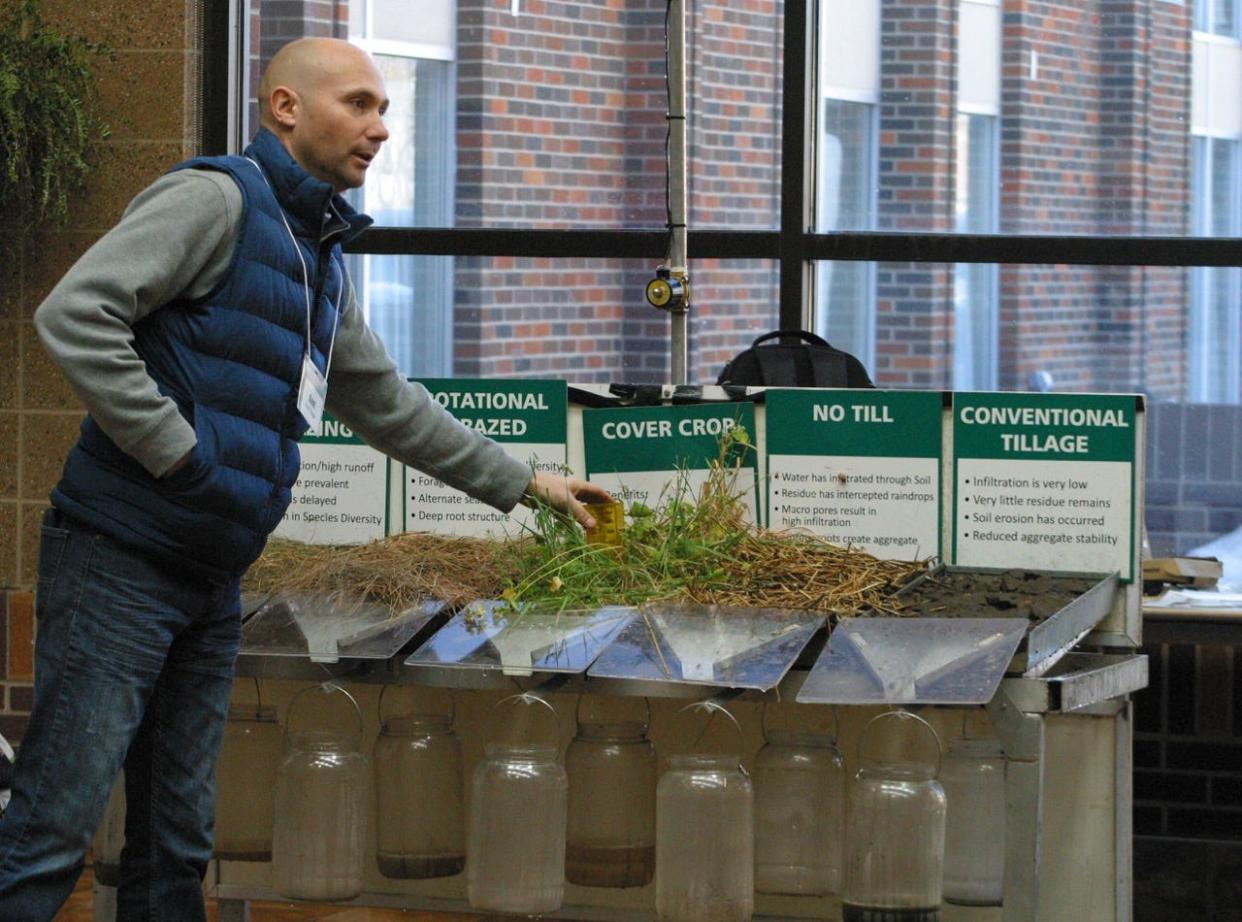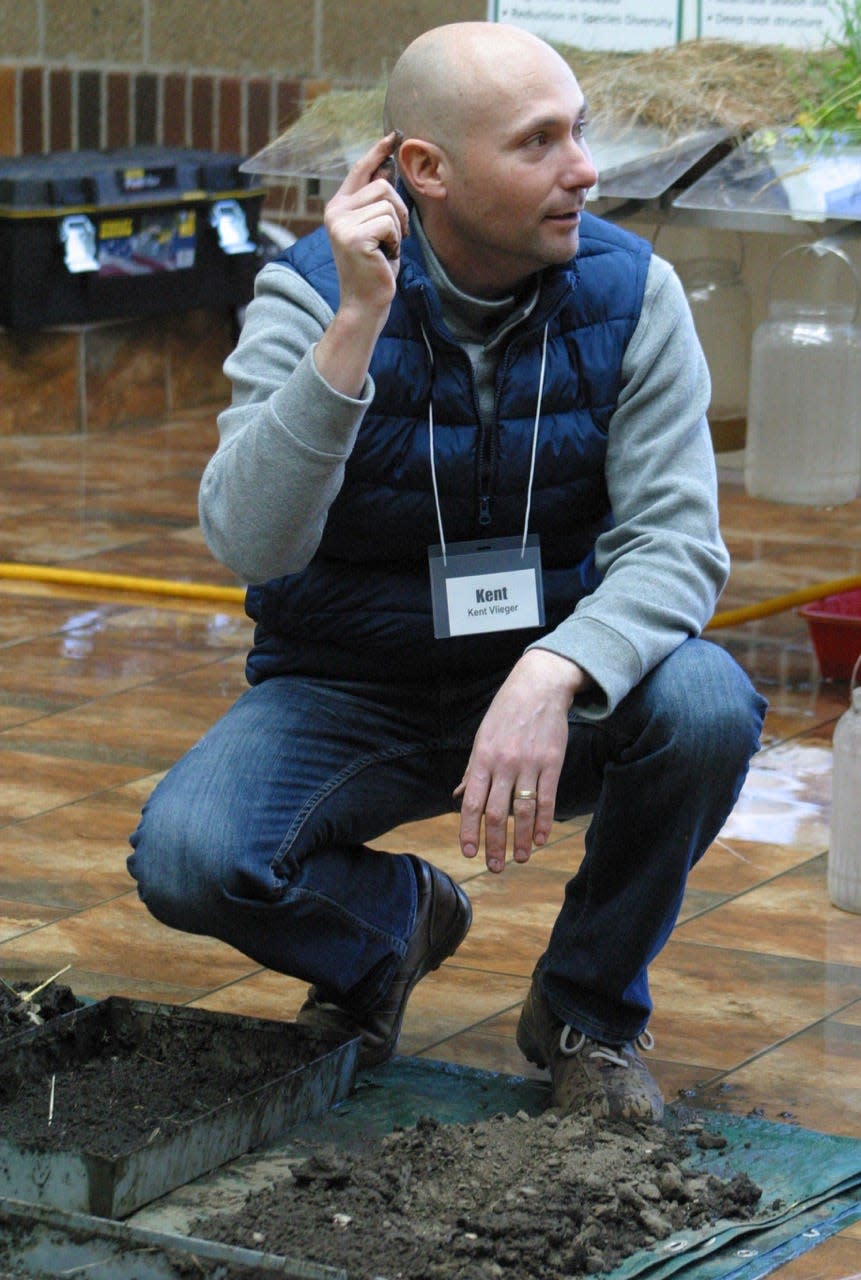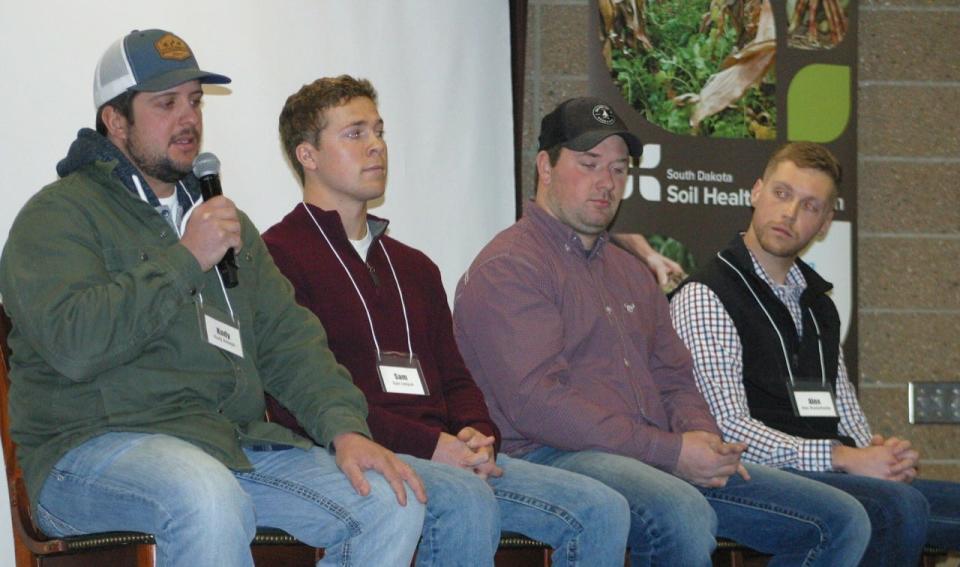Young farmers tell of the advantages of being better stewards of the land

A four-member panel of young South Dakota farmers recently shared insight into their approach on sustainable agriculture and ranching that takes a more holistic approach than has traditionally been used.
The presentation was one of several break-out sessions at the Soil Health Coalition Conference at the Best Western Ramkota in Aberdeen Jan. 18-19.
Ree Heights farmer and rancher Kody Aesoph said that in recent years, his mindset about farming has changed to one that is more regenerative and holistic.
"It's about not removing anything from the land," he said after the panel presentation.
That approach includes integrating cattle into the operation to cycle in nutrients similar to the effect of bison grazing on the prairie.
Northville farmer Alex Boekelheide said sustainable agriculture is about being good stewards of the land and taking a long-term approach as opposed to a year-to-year approach. The aim is to make the land more productive. And, he said, it's about trying to get things to resemble nature.
Boekelheide said that means introducing more diversity to the crop rotation beyond corn and soybeans, which can be a challenge, but can also open the door to other opportunities.
Tulare farmer Cooper Gordon said he started taking this approach in 2019 as a way to improve the pastures on the farm.
Sam Ireland of Martin has been working at a research farm in Montana and will soon manage the Dakota Lakes research farm near Pierre. His experience also includes working on a no-till family farm with crop diversity and integrated livestock.
Each faced challenges
Aesoph said when he shifted his operation, he wanted to share the idea of sustainable agriculture with everybody, but he soon found out no one wanted to hear about it.
"People didn't know they had to change," he said.
Now, four years later, he said people approach him and ask questions.
Gordon said his biggest challenge is communicating why he's taking a new approach. Meanwhile, Boekelheide said his biggest challenge was coming up with plan on how to start.
Ireland said he found benefit in having a cover crop this past year when he tried to grow corn in central Montana where the weather is hot and dry and the growing season is shorter. That cover crop came in handy he said, especially when weather conditions went dry.

Addressing soil salinity
One farmer in the audience asked if the panelists had any advise on addressing soil salinity, or a high concentration of salt in the soil that creates dead spots for production.
Aesoph said the first step he took was to stop spraying herbicide in those areas. Within two years, he said, wild barley and other plants were growing.
"Leaving it alone was the first step to get something growing to cycle it out," he said.
Gordon said he also stopped applying herbicide and worked with the Natural Resources Conservation Service office to come up with a cover crop mix and basically let grow whatever was going to grow. He's also tried some bale grazing where bales are set out in a targeted area.

Now in his second year with that approach, Gordon said, he's seeing good results.
Ireland suggested incorporation of long-term perennials.
Boekelheide said his hybrid approach has been one of enrolling high-moisture areas in the Conservation Reserve Program and enrolling other areas into a soil health and habitat program. Then, he said, when the five-year contract is up, evaluate the land for future use.
Advice for others
Each farmer was asked to share any parting advice for other producers considering sustainable ag.
Boekelheide said producers need only to start somewhere and know they are working on a long-term goal. Gordon suggested continued education and networking at conferences to continue learning new practices. Ireland said that as a young producer looking at sustainable ag, he can see the principles are working.
Aesoph said take a look at each decision and determine if it's a positive step or a step backwards and adjust accordingly.
"If you look at the positive steps and continue to make right decisions, it just becomes easier," he said.
Aesoph said there are also plenty of resources available including information on pioneers who made mistakes along the way.
This article originally appeared on Aberdeen News: Young farmers tell of the advantages of being better stewards of the land

